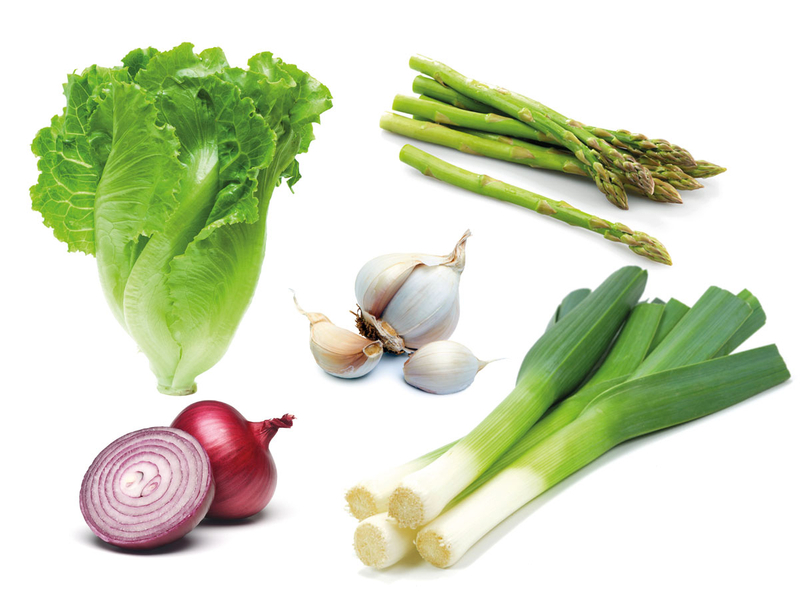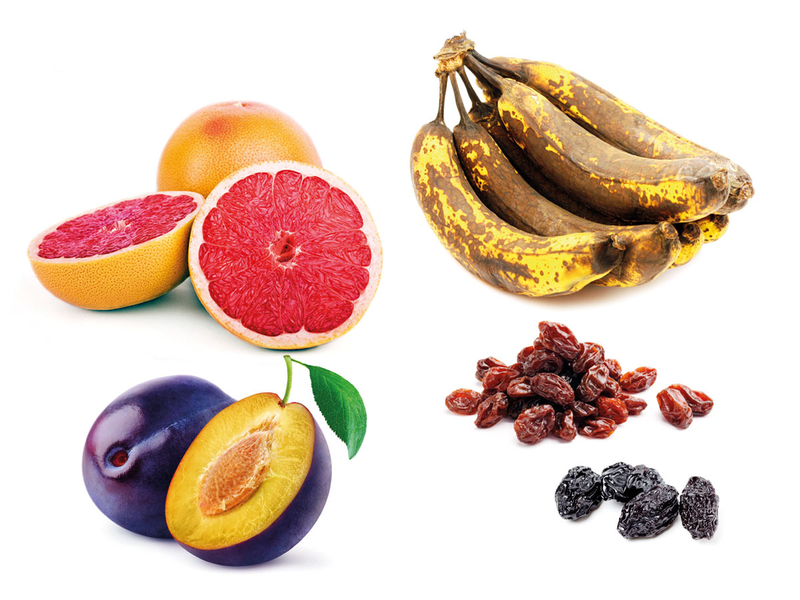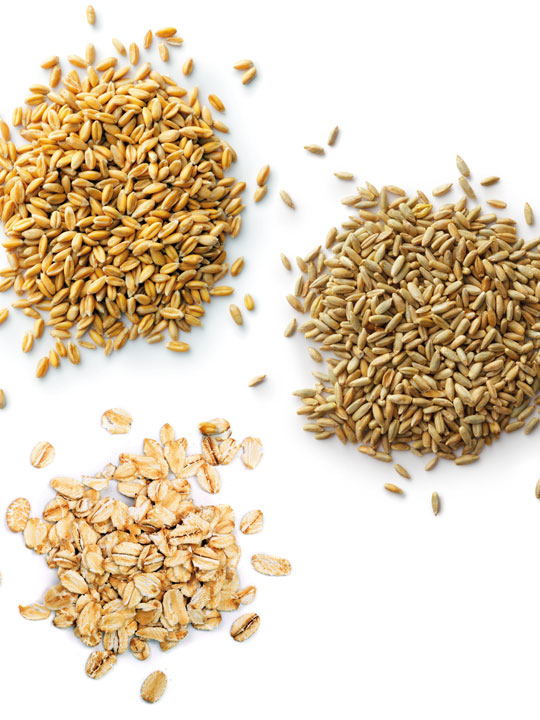_resources1_16a08522eed_medium.jpg)
DUBAI: People love to designate dietary devils. Monosodium glutamate (MSG). Fat. Carbs. Gluten. The latest food to be nominated for notoriety are fructans. And the focus on them came about, in part, because of our obsession with gluten.
Here’s how: Many people who follow a gluten-free diet don’t really need to do so for medical reasons (such as having celiac disease, for example). Yet, people insist on going gluten-free, not because it is trendy but because, they say, it makes them feel better. Many researchers believe that these people who think they can’t tolerate gluten are actually sensitive to fructans.
What are fructans?
Fructans are a type of carbohydrate composed of chains of fructose — the simple sugar found in honey and fruit, for example.
_resources1_16a08522fb1_author.jpg)
Carbohydrates are naturally present in different forms in most foods including dairy, grains, fruits and vegetables.
Juliot Vinolia, clinical dietitian, LD & Head of Dietary Services, Medeor24/7, Dubai, explains: “Carbohydrates are naturally present in different forms in most foods including dairy, grains, fruits and vegetables. During digestion, carbs are broken down to simple sugars like glucose, fructose and sucrose. Fructan is a fructose polymer or in simple terms, many fructose molecules bind together to form a fructan.”
When these fructans enter the digestive system this is where trouble begins, for some people. “They lack the enzymes or cannot digest more than a particular amount of fructans,” adds Vinolia. “The bacteria in the gut feed on these undigested fructans, resulting in by-products that may cause constant bloating, gas and abdominal discomfort.”
Why has there been a relatively lesser focus on fructan-intolerance as compared to gluten intolerance?
“Fructan indigestion symptoms were not recognised and interpreted correctly all these years due to its diverse natural food source combinations and presence in a broad spectrum of processed foods,” says Vinolia. “Fructan intolerance requires close supervision for a longer period to identify its sensitivity and intolerance limits.”
The information about fructans also gets more confusing because many people mistake them for fructose, a different carbohydrate, says Carrie Dennett, a United States-based dietician. (Fear of fructose also has prompted people to not only eschew corn syrup, but to also shun fruit, despite the fact that it’s a whole, nutrient-rich food.)
The information about fructans gets more confusing because many people mistake them for fructose — a different carbohydrate.
“For most people, fructans have benefits for gut health and general health,” says Dennett. “Three major types of fructans — inulin, oligofructose and fructo-oligosaccharides — are prebiotics, food components that nourish the beneficial bacteria in our gut microbiota. Researchers are also finding that fructans may have antioxidant benefits, and contribute to healthy blood-sugar levels and immune system function. No wonder inulin is added to so many foods as a ‘functional fiber’.”
Why the confusion?
Wheat is a major source of gluten (a protein that helps make dough elastic), and also contributes about 70 per cent of the fructans in many people’s diet, says Dennett. “So when someone feels better after eliminating wheat, they might conclude that they’ve identified a gluten intolerance.”
However, avoiding wheat and other gluten sources when fructans are the real culprit is an incomplete solution, because symptoms will probably occur when other fructan-rich foods are eaten.
One difficulty with diagnosing food sensitivities is that the food components that provoke them don’t exist in isolation, says Dennett. “They are part of a complex matrix with numerous other food components that could potentially cause an adverse reaction in some individuals. For most people, wheat is a nutritious food. But for the minority who react to wheat, any one or more of the grain’s many components — not just fructans and gluten, for example, but non-gluten proteins — could be the culprit,” she says.
What are the symptoms of fructan intolerance?
“These can be constant bloating, flatulence, constipation, cramps and the urge to pass stools several times a day,” says Vinolia.
Both fructan and gluten share similar indigestion symptoms such as bloating and abdominal discomfort.
Fructans, along with fructose, lactose and sugar alcohols such as sorbitol and xylitol are highly fermentable in the large intestine, leading to gas, painful bloating and diarrhoea, constipation or both. These carbs are collectively known under the acronym FODMAPs — fermentable oligo, di and monosaccharides and polyols (fructans fall into the oligosaccharide camp).
How can someone know they are fructan intolerant?
“A hydrogen breath test can be done to identify fructans. By eating test sample of foods with fixed fructan quanity, we can estimate one’s fructan tolerance limit from the amount of hydrogen exhaled post digestion of the fructans,” says Vinolia.
A dietitian experienced in food intolerances can be a handy guide.
“Some people have luck with eliminating all dietary fructans for a few weeks, then, if symptoms go away, adding back non-wheat sources of fructans. If symptoms return, it’s likely the fructans, not wheat,” says Dennett.
The way to rule out fructose intolerance is by starting off with a gluten-free diet (wheat-free) because many foods, especially all wheat products, have both gluten and fructose. Following the elimination diet and cutting out fructan rich foods one by one, documenting the on/off of symptoms will help shortlist and rule out the culprit food,” advises Vinolia.
The fructan elimination diet not only helps us identify the intolerance, but also tests the sensitivity to specific foods rich in fructan.
Vinolia also advises that one should read the nutrition labels of processed foods to keep in radar any fructan-rich ingredient.
What is the truth about gluten? Why is there such an industry around gluten-free?
“Gluten is a protein predominantly present in wheat. As a result of the obesity epidemic, people switched from refined grains to whole grains like wheat. With the increase in wheat intake around the world, gluten allergy and gluten intolerance prevalence increased,” says Vinolia. “According to recent studies of gastroenterology, though fructans and gluten share the same symptoms of intolerance, gluten has shown to damage the intestinal lining of gluten intolerant people leading to irritable bowel syndrome (IBS).
Whereas, fructan indigestion induces indigestion symptoms if only taken in large amounts, which the body can’t handle.
“Research justifying the ill effects of excess/long-term intake of gluten as one of the causes of inflammation in the body has got gluten-free foods the spotlight in the food industry.”
Will we see a similar fructan-free industry?
“With emerging evidence that fructan is the culprit inducing symptoms of indigestion and mimicking gluten intolerance and IBS, people are realising that they may not really be intolerant to gluten, but to this fructose polymer,” says Vinolia. A fructan intolerant individual may not necessarily be intolerant to gluten. Since fructans share a broad spectrum of food sources and also appear in different food combinations in processed foods, it will be highly challenging for one to go completely fructan free. But for people who have a sensitive stomach or those clinically confirmed with IBS, they will definitely benefit from fructan-free products over gluten-free ones. So a fructan-free industry can have an edge over the gluten-free industry.”
In what foods are fructans found?
They are naturally present in:

Vegetables: Such as artichokes, asparagus, onion, spring onion, garlic, beetroot, chicory root, radicchio lettuce, leek, cabbage, peas, chickpeas, cashew nut, pistachio.

Fruits: Such as grapefruit, over-ripe banana, plums, nectarines and some dried fruits like prunes, raisins and dates.

Cereals: Such as wheat, rye, barley and spelt.
Highest in processed products of wheat such as pasta, breads, bakery items, canned fruits, frozen vegetables and processed honey.
What foods have both, fructan and gluten?
Wheat, processed foods, canned fruits and frozen vegetables.
Study: Gluten vs fructan
A group of researchers from Norway randomly assigned 59 people, who did not have celiac disease but were avoiding gluten because they thought they had a gluten sensitivity, to eat baked muesli bars containing gluten, fructans or neither — the placebo bar — for seven days.
The study was double-blind, so neither the participants nor the researchers knew which bars were which during the active portion of the study.
The results, published in the journal Gastroenterology, showed fructans were actually more likely to produce symptoms than gluten: Thirteen participants experienced the worst symptoms after eating the bars with gluten, while 24 reported feeling worse after eating the fructan-rich bars. Interestingly, 22 said the placebo bars bothered them most.












